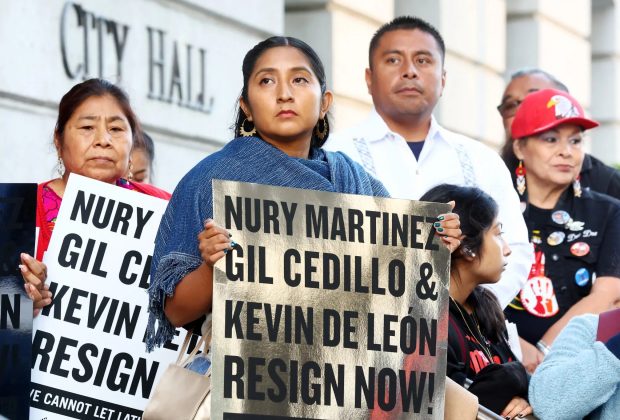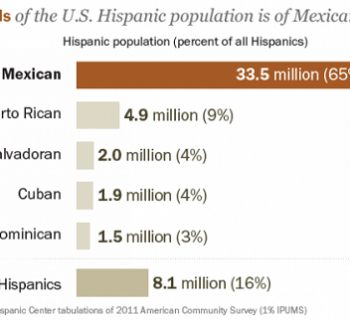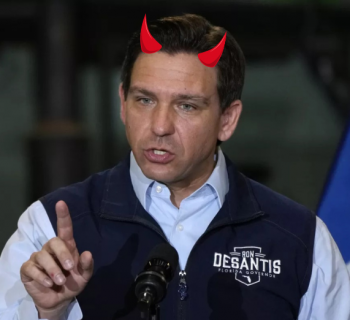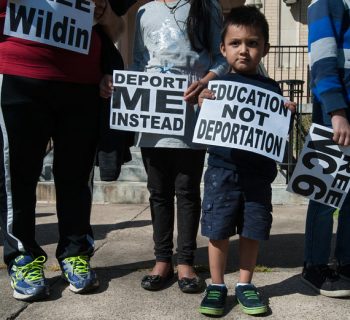By Shawn Hubler | The New York Times | OCT. 13, 2022 | Photo by Mario Tama
The jaw-dropping audio of some of Los Angeles’s most influential political figures brokering power and slinging racist gossip has rocked the city, the second largest in the nation. Even President Biden has weighed in.
On Wednesday, protesters shut down a City Council meeting for the second day in a row with calls for resignations; the attorney general announced plans to investigate; and Nury Martinez — a San Fernando Valley councilwoman who had already relinquished her council presidency and taken a leave of absence — resigned entirely from elected office. Earlier this week, the head of one of Southern California’s most powerful labor organizations stepped down.
If you’re not in Los Angeles or are just tuning in, you may be wondering: How did we get here? Here are five things to know:
1. About half of the four million or so residents in Los Angeles are Latino. But Latinos hold only four of the 15 City Council seats.
By comparison, white Angelenos, a declining population, make up about 28 percent of the city’s residents and hold six Council seats. Black Angelenos hold three, despite having less than 9 percent of the population. Only Asian Americans, with about 12 percent of the city’s residents, have representation proportionate with their population, with two Council seats.
2. Every decade, after the census comes out, the nation adjusts the boundaries of its political districts. Last year was one of those years.
The process is intense. In many places in the U.S., redistricting descends into rank gerrymandering. California’s state government has sought to avoid this by outsourcing it to an independent redistricting commission, which uses complex computer models and public hearings to redraw the lines around legislative and congressional districts. Some local governments in the state have independent commissions, too — Los Angeles County, for instance. But the panel that draws the lines for the city of Los Angeles is not independent. It holds public hearings, creates models and recommends boundaries, but the final districts are still determined by the City Council.
3. Last October, three Latino council members met privately with the head of the Los Angeles County Federation of Labor. The subject? Latino clout and redistricting.
Present were Martinez; two councilmen from the city’s Eastside, Gil Cedillo and Kevin de León; and the head of the Los Angeles County Labor Federation, Ron Herrera. All are Latino and veterans of California politics. “My goal is to get the three of you elected, and I’m just focused on that,” Herrera told them. “We’re like a little Latino caucus of our own.”
4. As they discussed carving up voting blocs and choice “assets,” such as job-rich arenas, universities and airports, their bare-knuckled conversation was being secretly recorded.
Martinez complained that the advisory map removed political plums like the Van Nuys Airport out of her district, and suggested that Los Angeles International Airport be taken from a white councilman and put in a Black councilman’s district. That white councilman, Mike Bonin, she added, using a vulgarity, was weak. She denigrated Bonin’s Black son in racist terms and said he needed “a beatdown.” She said that the Los Angeles County district attorney was “with the Blacks” and that white liberals on the Council were untrustworthy. She also belittled immigrants from Oaxaca. The men did not confront her. In fact, at times, they kept the conversation going with their own derogatory remarks, the recording indicates.
5. The four thought they were alone and could speak freely. And back-room political conversations get raw, especially in big cities. But yikes.
In Los Angeles — a diverse city that prides itself on the strides it has made since 1992, when the city rioted for three days over racial and ethnic tensions — the audio has been mind blowing. Since The Los Angeles Times first reported on the recording on Sunday, calls have proliferated for resignations. On Monday, Herrera was the first to comply. Martinez initially relinquished her Council presidency, then announced on Tuesday that she was emotionally exhausted and taking a leave of absence. On Wednesday she resigned from the Council completely. Not budging so far are Cedillo, who was upset by a progressive challenger in June and is a lame duck until December, and de León, who is not up for re-election for another two years.







